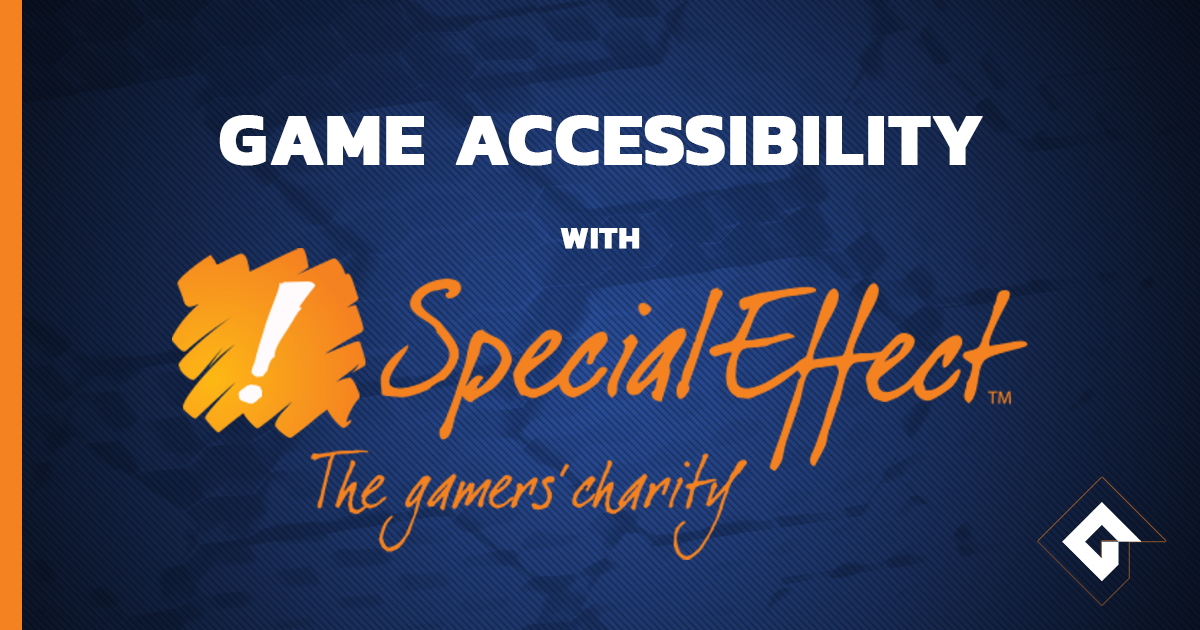SpecialEffect are an award-winning charity that enable people with physical disabilities to benefit from the fun, inclusion and therapy of video games. They support people of all ages through personalised assessments, equipment loans and equipment modifications. They've written the following blog on accessibility in games.
Video games facilitate inclusion, friendship, confidence and creativity. But many people with physical disabilities are missing out because they find the physical demands of using a standard controller difficult or impossible.
But by including appropriate in-game settings and assists, you can begin to level the playing field and make your games playable by a far wider range of players.
Accessibility doesn’t need to affect your vision of your game either. Reasonable adjustments can widen accessibility to the fundamental game aesthetic. Do you have a key animation in your game that’s dependent on a button hold, for example? For many of the people we see, a toggling a button is far easier than holding it down for a set period. A different access method, but the player’s experience of the story arc remains intact and the challenge is manageable through personal levels of difficulty.
There are many ways to add accessibility through settings. These include full game button and joystick input remapping, the ability to slow a game down, the option to press a button once rather than button mash, and camera options for auto-follow/auto-correcting the camera in a 3D game, so it can be played with a single stick.
There is often also a limit to how many buttons, switches and sticks people can access due to limited movement, and that’s another reason to consider a reduced control set. FIFA, for example, has a very effective one and two button modes. It’s also a good example of a game that lets you remap which button inputs you use to navigate menus. It's a good idea to always use the same gameplay control alternatives for menu access for consistency, though.
Then there’s eye-control - you might have had fun using it to play DiRT or FIFA on our stand at an expo. Some of the main factors that inherently assist eye control accessibility are allowing the mouse (pointer) as the only input required for the entirety of the game, large well-spaced out target areas for a user to focus on, and adjustable (or a lack of) time constraints to allow the player time to dwell-select. It’s also helpful for every action to be assigned as a single left click only, as swapping between click, double click, drag etc can be time-consuming for some players. It's not something seen often in indie games but it's something we encourage indie developers to access.
We’re creating games using these principles on our Eye Gaze Games site, and there are others who, by accident or good overall accessible UI design, lend themselves well to eye control - card games such as Hearthstone, Magic Arena and Lightseekers - and some puzzle games like Girls like Robots, plus tower defence games and quiz games. Some games can be made eye gaze accessible even if they don’t fulfil all these requirements. Forza and Minecraft [LINK: EyeMine] are in this category, but they require overlay UIs and third-party software to achieve it.
We are only scratching the surface of accessibility though, and I’d urge you (if you haven’t already) to check out the excellent Game Maker’s Toolkit set of Designing for Disability videos:
The video series dives into practical examples of games accessibility (or lack of it) in action.
If you want more specific advice on accessibility in your game you can always reach out and talk to us. Our first-hand experience of working with hundreds of gamers with disabilities is available to any gaming hardware or software producer to help them develop more accessible products. We were one of the organisations that worked with Microsoft in the design and testing of Microsoft’s Xbox Adaptive Controller, for example, and we’ve partnered with many games developers to provide advice on accessibility.
Including accessibility in games really does make a difference. The mother of a young man we helped said, “We’ve always been a huge gaming family so it’s something I wanted my children to have the opportunity to do. Particularly for disabled people, I think games are really important because someone who’s able-bodied can go and play golf, they can drive a car, they can do almost anything in real life. Chase isn’t going to have those same opportunities, so him being able to play a game creates a level playing field. And as a parent, it’s made so much difference.”


